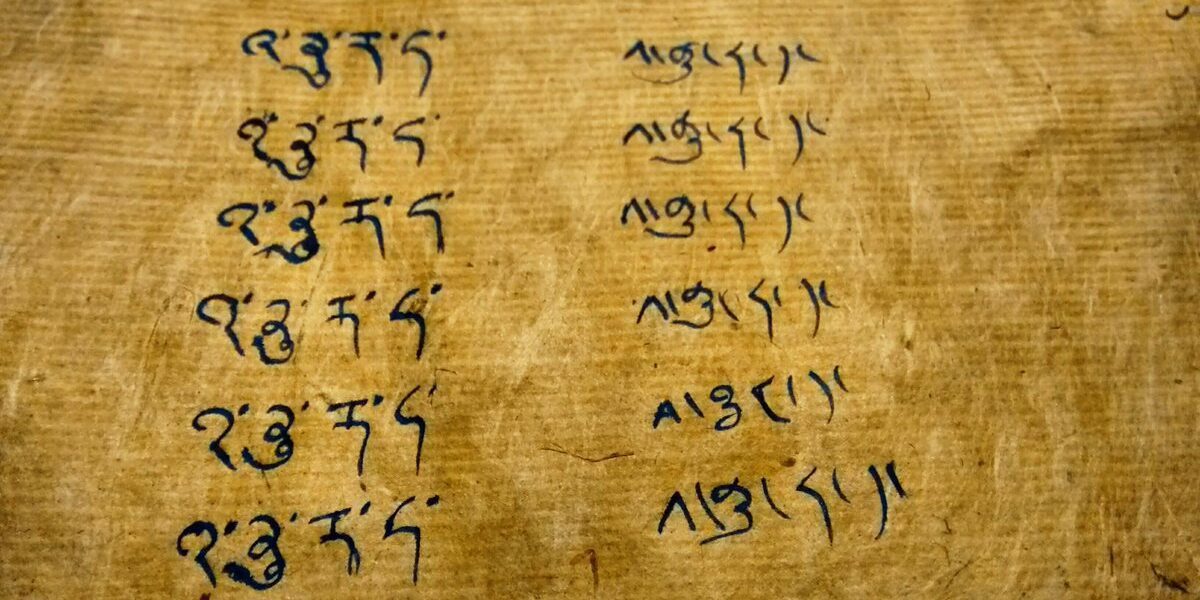The high-altitude region of Ladakh, known for its breathtaking landscapes, Buddhist monasteries, and unique cultural heritage, also holds the mysteries of Ancient Ladakhi Scripts, which reflect its rich linguistic history. However, what is often overlooked is the region’s rich linguistic past, encapsulated in ancient Ladakhi scripts that have slowly faded into obscurity. These scripts are key to understanding the forgotten languages and the deep cultural significance of Ladakh’s historical evolution. This blog post delves into the history, influence, and preservation efforts surrounding the ancient Ladakhi scripts and their importance in decoding the region’s forgotten languages.
Introduction to Ladakh’s Linguistic Heritage
Ladakh, nestled in the Indian Himalayas, has long been a cultural and linguistic crossroads. Historically influenced by Tibet to the east and India to the south, its languages and scripts offer a unique window into the region’s past. While much of Ladakh’s modern linguistic landscape is dominated by the Tibetan-derived Bhoti script, the region’s earlier scripts and languages remain largely unknown to the wider world. Understanding these forgotten scripts is not just an academic exercise but a way to connect with Ladakh’s long history, its early civilizations, and their interactions with neighboring cultures.
The Cultural and Historical Importance of Ladakh’s Ancient Scripts
Ladakh’s ancient scripts serve as more than just tools of communication; they are symbols of the region’s cultural identity and historical continuity. These scripts were used to document religious texts, historical events, trade records, and personal communications. They reflect a time when Ladakh was a vibrant center of trade, connecting the Indian subcontinent with Tibet and Central Asia.
The preservation of these scripts, often found in ancient manuscripts stored in Ladakh’s monasteries, is crucial for understanding the region’s history. The texts reveal how Ladakh was influenced by Buddhism, trade, and external cultures. Many of these manuscripts are in danger of being lost due to the fragile conditions of their storage and the dwindling number of experts capable of decoding them.
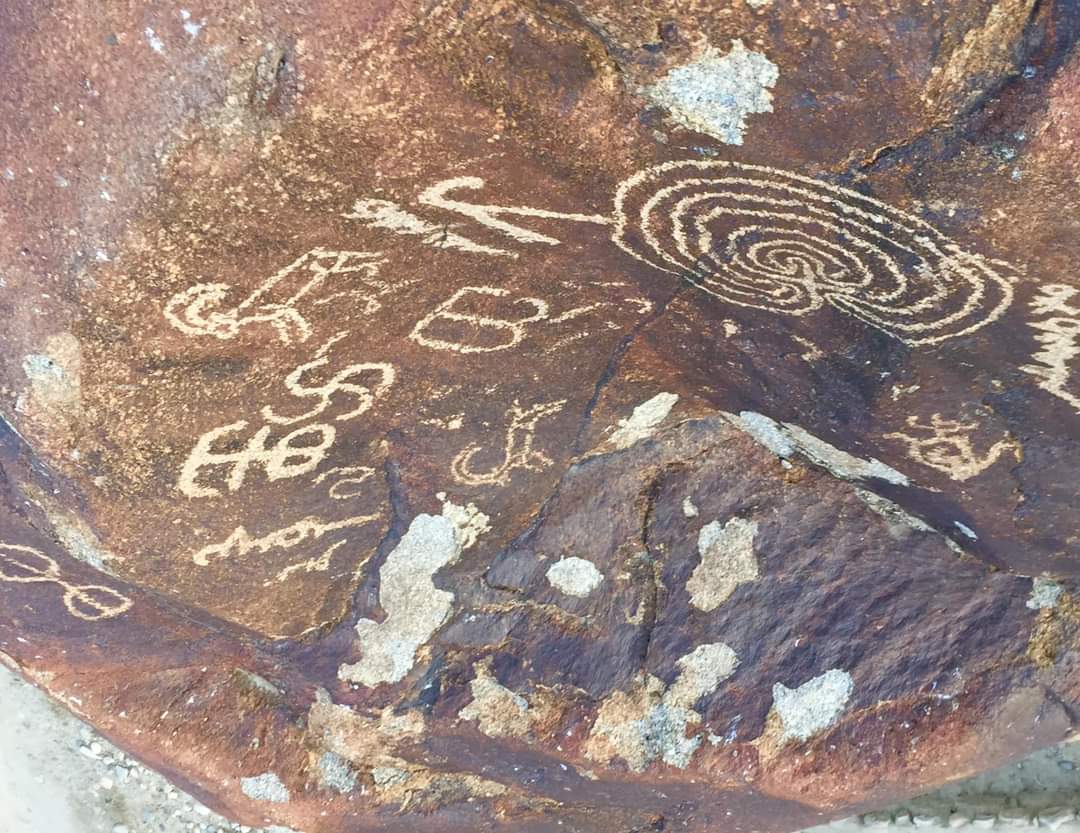
Influence of Tibetan and Indian Cultures on Ladakhi Scripts
The development of Ladakh’s writing systems was heavily influenced by Tibetan and Indian cultures. The Tibetan script, particularly the Bhoti script, has played a prominent role in shaping Ladakh’s language and written records. The introduction of Tibetan Buddhism to Ladakh in the 8th century brought with it the Tibetan script, which quickly became the region’s primary writing system for religious and cultural documentation.
Before the dominance of Tibetan scripts, Indian writing systems, such as the Brahmi script, left their mark on Ladakh’s ancient languages. The influence of Brahmi is seen in the region’s earliest inscriptions and stone carvings. These inscriptions, often etched in monasteries and along trade routes, serve as valuable records of Ladakh’s historical ties with ancient India.
The Bhoti Script: A Key to Understanding Ladakh’s Writing Systems
One of the most significant scripts in Ladakh’s history is the Bhoti script. Derived from classical Tibetan, Bhoti became the primary script for writing Ladakhi and other regional dialects like Zanskari and Balti. The Bhoti script was closely tied to Buddhism, and it was used extensively in the monasteries for religious texts, teachings, and scriptures. Even today, Bhoti is still taught in some monastic schools and used in religious contexts.
However, Bhoti’s dominance came at the cost of other indigenous Ladakhi scripts, many of which have now been lost or are endangered. Understanding the evolution of Bhoti and its adoption in Ladakh is crucial for decoding the region’s linguistic history.

Manuscripts from Ladakh’s Monasteries: Preserving Ancient Knowledge
Many of Ladakh’s ancient texts and manuscripts are stored in its Buddhist monasteries, which have long been centers of knowledge and religious study. These manuscripts contain valuable information about Ladakh’s history, including religious teachings, historical chronicles, and even astronomical observations. However, due to Ladakh’s harsh climatic conditions and the fragile nature of these manuscripts, many are deteriorating and at risk of being lost forever.
Monastic archives across Ladakh hold hundreds of such texts, written in the Bhoti script and other lesser-known scripts, which remain undecoded. Efforts are being made to preserve these manuscripts, with digital archiving projects underway to save this ancient knowledge for future generations. But without enough scholars trained in these ancient scripts, the task remains a race against time.
Decoding the Lost Languages of Ladakh: Techniques and Challenges
Translating ancient Ladakhi texts is no easy feat. The decoding of ancient inscriptions and manuscripts requires specialized knowledge of not just the Bhoti script but also the older, forgotten scripts that have faded from use. Linguists face many challenges, including:
- Lack of Documentation: Many of these scripts were passed down through oral traditions, making written documentation sparse.
- Fragmented Manuscripts: Many ancient texts are incomplete or damaged due to age and environmental conditions.
- Complex Linguistic Evolution: The influence of multiple cultures (Tibetan, Indian, and Central Asian) complicates the understanding of these languages and scripts.
Despite these challenges, scholars are making progress. They are using modern linguistic techniques and even AI-driven tools to analyze ancient manuscripts and inscriptions, hoping to unlock the secrets of Ladakh’s past.
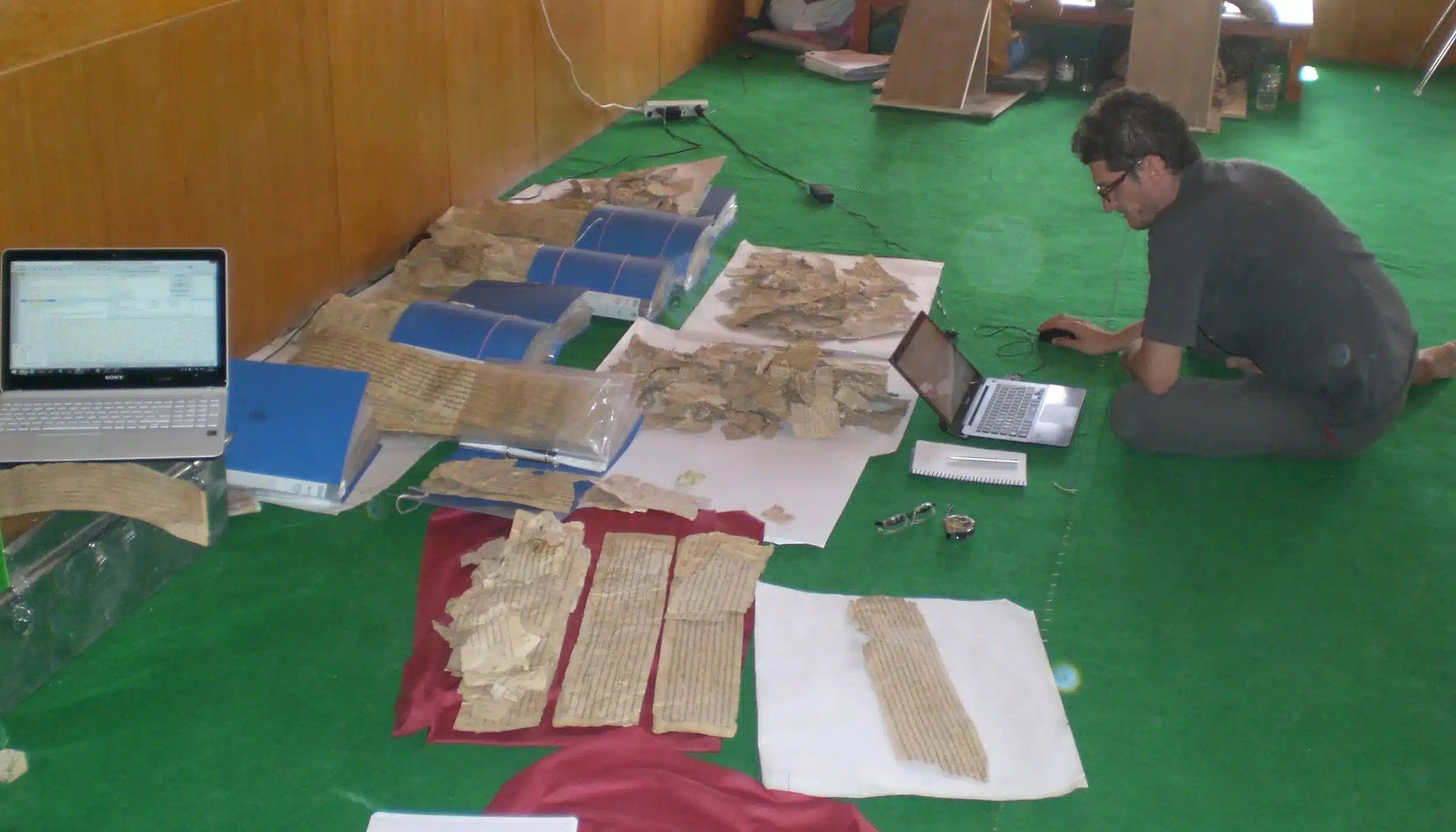
The Role of Buddhism in the Evolution of Ladakhi Scripts
Buddhism played a central role in shaping Ladakh’s writing systems. As the religion spread from Tibet into Ladakh, it brought with it not only spiritual teachings but also the Tibetan script. Monks were often the custodians of literacy, and they used the Bhoti script to transcribe religious texts, rituals, and historical events.
Buddhism also fostered a literary culture in Ladakh, where monasteries became centers of learning and manuscript production. The spread of Buddhist literature throughout the region ensured that the Bhoti script remained the dominant form of writing for centuries, gradually overshadowing other local scripts.
Endangered Scripts: Reviving and Preserving Ladakh’s Forgotten Languages
Today, many of Ladakh’s ancient languages and scripts are endangered. With the rise of modern communication tools and the dominance of major languages like English and Hindi, these ancient scripts face the threat of extinction. However, efforts are underway to revive them.
Community-driven initiatives, supported by NGOs and cultural preservation groups, are working to document and preserve Ladakh’s endangered scripts. Schools in the region are also beginning to teach the Bhoti script to younger generations, ensuring that the region’s linguistic heritage is not completely lost.
These revival efforts also extend to digital preservation. Scholars are working to digitize ancient manuscripts, making them accessible to a wider audience and ensuring their survival in the digital age.
The Proto-Tibeto-Burman Connection: Ladakh’s Ancient Linguistic Roots
Ladakh’s ancient languages have deep roots in the Proto-Tibeto-Burman language family, a branch of languages spoken across the Himalayan region and beyond. This ancient linguistic connection is key to understanding the evolution of Ladakh’s early languages and their development into modern dialects like Ladakhi, Balti, and Zanskari.
Researchers believe that before the dominance of Tibetan Buddhism, Ladakh may have been home to a variety of pre-Buddhist languages, many of which have disappeared. Tracing these ancient linguistic roots is essential for decoding the scripts and languages that have been lost to history.
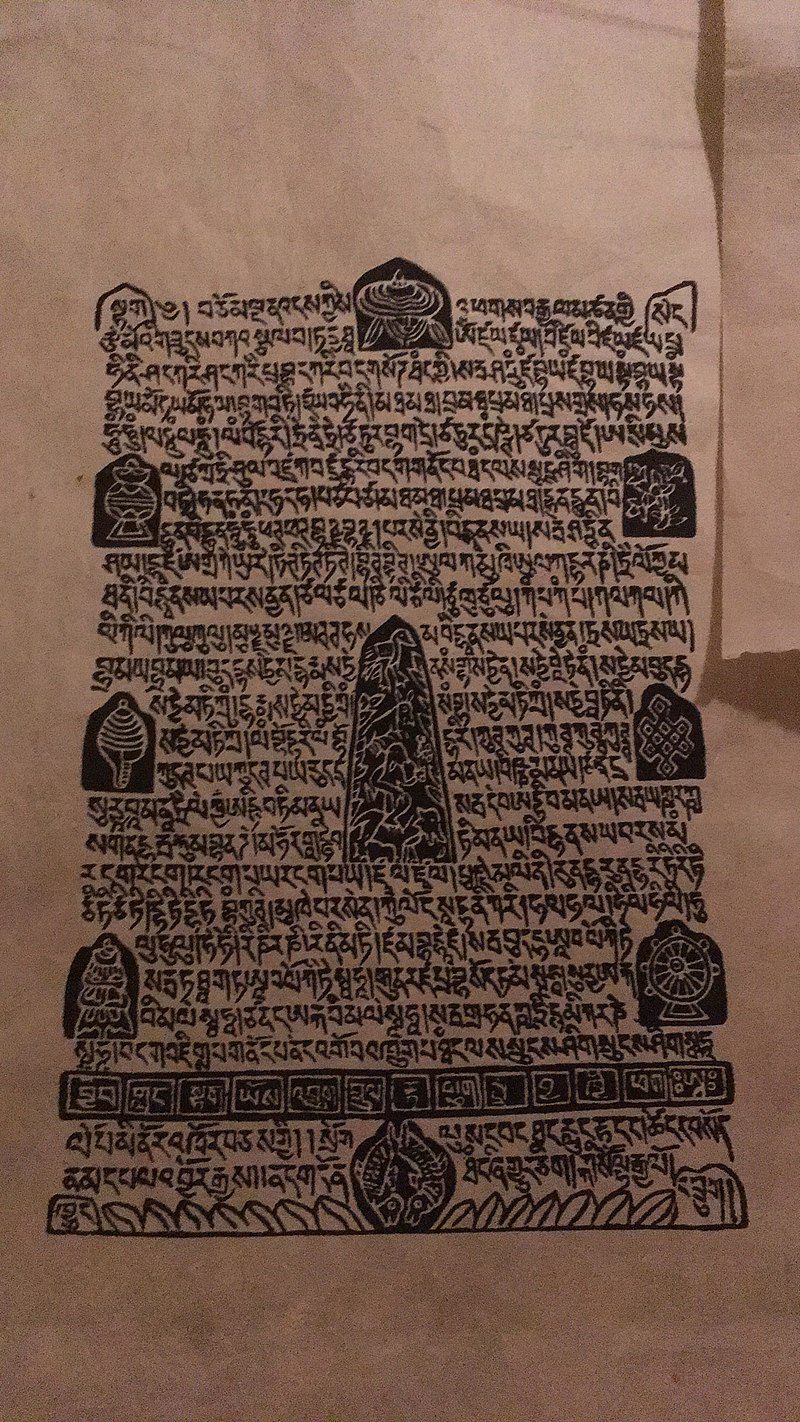
The Relationship Between Zanskari, Balti, and Ladakhi Scripts
While Ladakh is the focus of this article, it is important to note that the region’s scripts and languages are closely related to those of Zanskar and Baltistan. The Balti language, spoken in parts of Pakistan-administered Kashmir, and the Zanskari language, spoken in Ladakh, share similarities with Ladakhi in both spoken and written forms.
Comparing these related languages and scripts offers valuable insights into how Ladakh’s ancient scripts evolved and how they interacted with neighboring regions. Studying these linguistic connections helps to paint a more complete picture of Ladakh’s past and the movement of peoples and cultures across the Himalayas.
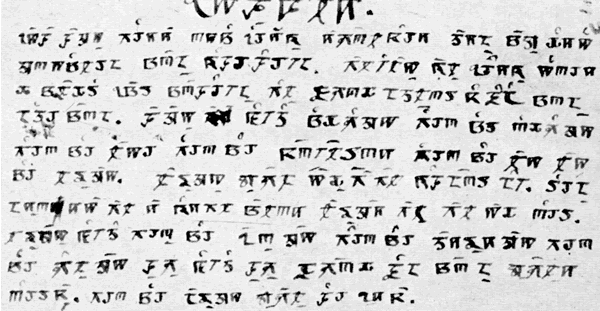
The Art of Ladakhi Calligraphy and Epigraphy
Ladakh has a rich tradition of calligraphy and epigraphy. Ancient inscriptions can be found carved into rocks, temples, and stupas across the region. These inscriptions, often written in the Bhoti script, serve as historical markers, recording everything from religious teachings to political decrees.
The art of Ladakhi calligraphy is another area where these scripts come to life. In monasteries and religious centers, calligraphers continue to produce beautiful written works using traditional techniques. This art form not only preserves the ancient scripts but also keeps alive the cultural practices associated with them.
Stone Carvings and Inscriptions: Insights into Ladakh’s Past
Ladakh’s landscape is dotted with stone carvings and inscriptions that date back centuries. These inscriptions, etched into rock faces and monuments, offer valuable insights into the region’s history, trade routes, and cultural interactions. Many of these stone carvings are written in a mix of Tibetan, Sanskrit, and ancient Ladakhi scripts, showcasing the region’s linguistic diversity.
These inscriptions are not just relics of the past but are key to understanding Ladakh’s development as a cultural crossroads in the Himalayas.
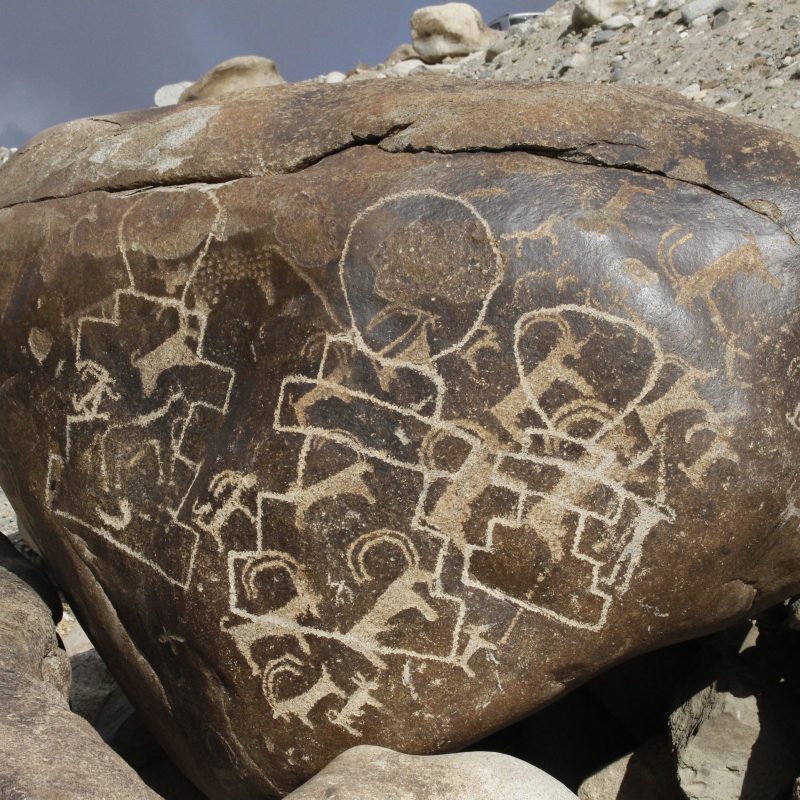
Conclusion: The Future of Ladakh’s Ancient Scripts
The future of Ladakh’s ancient scripts is uncertain. While there are efforts to preserve and revive these forgotten languages, they are in a race against time. The globalized world, with its focus on dominant languages, often overlooks the importance of linguistic diversity. However, preserving these scripts is crucial for maintaining Ladakh’s cultural identity and understanding its place in the broader history of the Himalayas.
Through digital archiving, community-driven initiatives, and a renewed focus on teaching Ladakh’s younger generations, there is hope that these ancient scripts will not be forgotten but will continue to be a part of Ladakh’s rich cultural heritage.
FAQs on Ancient Ladakhi Scripts and Forgotten Languages
1. What are the ancient scripts of Ladakh?
The ancient scripts of Ladakh include Bhoti, Sanskrit-derived scripts, and other lesser-known writing systems influenced by Tibetan and Indian cultures.
2. How did the Bhoti script influence Ladakh’s writing systems?
The Bhoti script, derived from Tibetan, became the dominant writing system in Ladakh, especially after the spread of Buddhism, and was used for religious and historical documentation.
3. Are any of Ladakh’s ancient languages still spoken today?
While many ancient Ladakhi languages have disappeared, some, like Ladakhi, Balti, and Zanskari, are still spoken but are at risk of becoming endangered.
4. What role did Buddhism play in Ladakh’s linguistic evolution?
Buddhism introduced Tibetan culture and scripts, particularly the Bhoti script, which played a major role in shaping Ladakh’s written and spoken languages.
5. How are Ladakh’s ancient manuscripts being preserved?
Efforts are being made to preserve Ladakh’s ancient manuscripts through digital archiving, conservation projects, and the revival of traditional script education.
6. What is the significance of Ladakh’s stone inscriptions?
Ladakh’s stone inscriptions offer valuable insights into the region’s history, documenting religious teachings, political events, and cultural exchanges.

